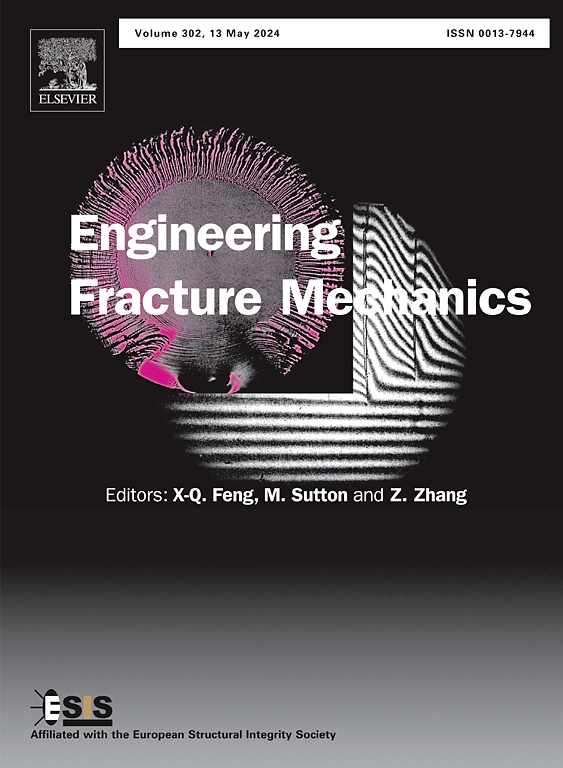用断裂和缺口力学方法估计普通和严重缺口L-PBF AlSi10Mg试样的单轴疲劳极限
IF 4.7
2区 工程技术
Q1 MECHANICS
引用次数: 0
摘要
本文讨论了缺口力学和线弹性断裂力学在估计增材制造(AMed)试件单轴疲劳极限中的适用性。众所周知,材料的疲劳行为受到制造过程中固有缺陷的影响,而被缺陷削弱的材料的疲劳强度取决于材料性能、载荷比R和缺陷尺寸。虽然缺陷对疲劳阈值的敏感性已经在不同的增材制造材料的文献中得到了广泛的研究,但对缺口,特别是尖锐缺口,包括缺口-缺陷相互作用和竞争的影响的研究仍然有限,这给理论和实验研究留下了相当大的空间。在本研究中,对由AlSi10Mg粉末制成的普通和尖锐缺口试样进行了疲劳试验,以研究AM工艺相关缺陷和尖锐缺口之间的竞争关系。研究结果表明,增材制造缺陷对普通试样是有害的,但不会影响尖锐缺口的疲劳强度。先前发表的一个模型可以很好地预测平原和尖锐缺口试件的疲劳极限;该模型需要两种材料性能,即平面材料疲劳极限和长裂纹I型应力强度因子的阈值范围。本文章由计算机程序翻译,如有差异,请以英文原文为准。
Fracture and notch mechanics to estimate the uniaxial fatigue limit of plain and severely notched L-PBF AlSi10Mg specimens
This work discusses the applicability of the notch mechanics and linear elastic fracture mechanics to estimate the uniaxial fatigue limit of sharply notched Additively Manufactured (AMed) specimens. It is well known that the fatigue behaviour of AMed materials is influenced by defects inherent to the manufacturing process and the fatigue strength of materials weakened by defects depends on material properties, load ratio R and size of defects. While defect sensitivity on fatigue thresholds has been studied extensively in the literature for different AM materials, investigations on the effect of notches, and especially sharp notches, including notch-defect interaction and competition are still limited, leaving considerable scope for theoretical and experimental investigations. In this study, fatigue tests were conducted on plain and sharply notched specimens AMed from AlSi10Mg powders to investigate the competition between AM process-related defects and sharp notches. The investigation highlighted that AM defects are detrimental for plain specimens, while they do not impact the fatigue strength of sharp notches. A previously published model proved satisfactory to predict the fatigue limit of the plain and sharply notched specimens; the model requires two material properties, namely the plain material fatigue limit and the threshold range of the mode I stress intensity factor for long cracks.
求助全文
通过发布文献求助,成功后即可免费获取论文全文。
去求助
来源期刊
CiteScore
8.70
自引率
13.00%
发文量
606
审稿时长
74 days
期刊介绍:
EFM covers a broad range of topics in fracture mechanics to be of interest and use to both researchers and practitioners. Contributions are welcome which address the fracture behavior of conventional engineering material systems as well as newly emerging material systems. Contributions on developments in the areas of mechanics and materials science strongly related to fracture mechanics are also welcome. Papers on fatigue are welcome if they treat the fatigue process using the methods of fracture mechanics.

 求助内容:
求助内容: 应助结果提醒方式:
应助结果提醒方式:


